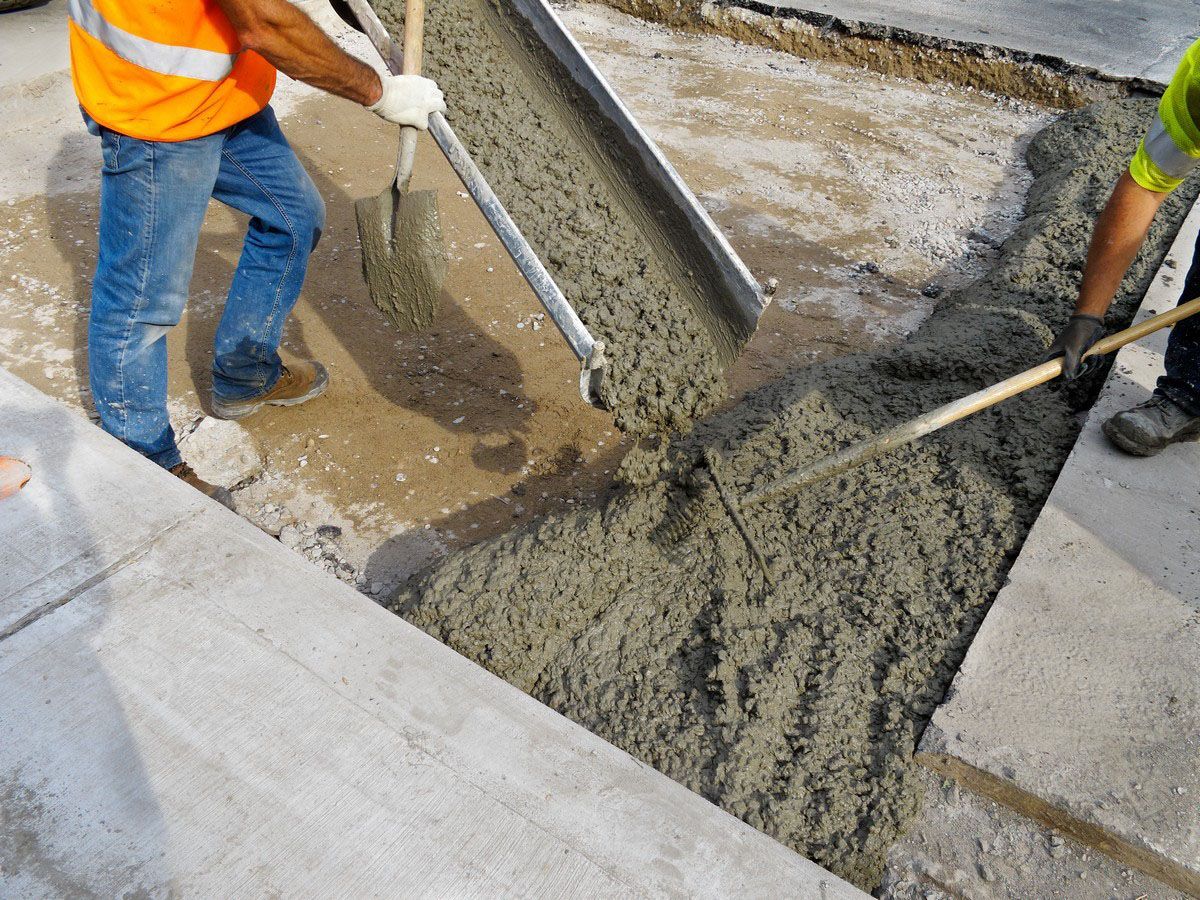November 22, 2025
Concrete, a highly durable and versatile material, has been a cornerstone of construction throughout history. Its wide-ranging applications, from ancient architecture to modern urban landscapes, highlight its significant role in human advancement. In this article, we'll explore fascinating facts about concrete, diving into its past, unexpected uses, and innovations that a concrete contractor uses to showcase its adaptability and enduring importance.
1. The Origins of Concrete Use
The origins of concrete can be traced back to ancient civilizations that recognized its potential. Historical records show that the earliest concrete-like materials date back to regions like Egypt, where a mixture of mud and straw was used for building. The Mediterranean world, including the Greeks and later the Romans, further advanced these materials. They developed primitive but effective concrete formulas that included lime and volcanic ash. These early innovations laid the foundation for concrete's indispensable role in architectural history.
Concrete's significance grew alongside human achievement, becoming a primary material for large structures. Its early use in ancient societies underscores its fundamental properties such as durability and versatility. Civilizations like the Romans mastered the art of concrete, using it in bridges, buildings, and aqueducts. The structural strength these mixtures provided allowed for designs that stood the test of time. This historical groundwork cemented concrete's place as a timeless building material.
The creation of concrete wasn't uniform across ancient cultures, but shared commonalities in its fundamental properties. Durability and adaptability were consistently leveraged for different construction needs. As societies recognized the material's potential, its applications broadened. Predating modern engineering, these early uses indicated a sophisticated understanding of material science, though the mix designs were simpler than today's innovations. Concrete's transformative influence became more prominent with each architectural feat achieved by a concrete contractor of the past.
2. Roman Concrete
Furthermore, Roman concrete represents a pinnacle of ancient engineering, with its formula offering insights into the civilization's architectural genius. Known as "opus caementicium," this material was a blend of volcanic ash, lime, and water. The durability of Roman concrete is evidenced by enduring structures such as the Pantheon, whose dome remains the largest unreinforced concrete dome in the world. The aqueducts, crucial for urban water supply, further highlighted their reliability and strength. Roman advancements in concrete not only revolutionized their empire but also laid engineering foundations that future societies would emulate.
The Romans' innovative use of concrete allowed them to construct architectural marvels that have defied time. Their ability to create enduring monuments showcased an early form of construction that integrated science and art. With techniques such as underwater concreting for harbor installations, they demonstrated concrete's versatility beyond terrestrial applications. The bonding agent, pozzolana, originated from volcanic ash and contributed to the longevity and impermeability of Roman structures. This adaptability was as essential to Rome's legacy as the majestic structures themselves.
The rediscovery of Roman concrete techniques later spurred interest in recreating its exceptional properties. The material's resilience owed much to its unique composition and curing conditions. As modern engineers study these ancient formulas, they aim to replicate or improve upon them, especially regarding environmental sustainability. The Roman capability to use local materials effectively speaks to their environmental adaptation, aligning with contemporary goals to minimize carbon footprints. Thus, concrete's historical applications continue to inspire modern innovation and sustainable practices used by a concrete contractor today.
3. The Decline and Rediscovery
After the fall of the Roman Empire, the knowledge and widespread use of concrete experienced a decline, marking a shift in architectural history. Without the technical expertise that the Romans held, other civilizations could not replicate the material's durability. This period saw a reliance on alternative construction materials, such as stone and wood, which lacked the same versatility. Concrete usage did not disappear entirely but receded in prominence. The significance of this decline lay not only in lost techniques but also in a gradual fading of monumental building projects.
The Industrial Revolution witnessed a renewed interest in concrete, driven by an urgent need for new building materials. Innovations in the 18th and 19th centuries transformed concrete's composition with the introduction of reinforced concrete. Key figures in engineering and architecture recognized its potential, leading to a resurgence in its use. This period of rediscovery harnessed both traditional knowledge and new industrial processes. As a result, concrete not only returned to the forefront of construction but also exceeded its previous capabilities.
The resurgence of concrete in modern construction was characterized by rapid development and innovation. Engineers sought to address the limitations of past applications by experimenting with new compositions and techniques. Advances such as reinforced and prestressed concrete expanded architectural possibilities, paving the way for skyscrapers and extensive infrastructure. The rediscovery and adaptation of concrete signified a milestone in engineering, facilitating complex structures that define contemporary skylines. This revival reflects a pivotal chapter in concrete's evolution as a cornerstone of industrial and urban development.
4. Concrete in Modern History
Concrete's transformation in modern history is marked by significant developments in composition and applications. The 19th century witnessed the advent of Portland cement, refining concrete's usability and strength. This innovation enabled the creation of efficient, durable mixtures that became foundational elements in contemporary construction projects. With the emergence of reinforced and prestressed concrete, architects could achieve unprecedented structural spans and complexities. These advances illustrate concrete's adaptability to meet evolving architectural and engineering demands.
During the 20th century, concrete facilitated the rapid urbanization experienced across the globe. Its use in constructing roads, bridges, and high-rise buildings underscored its adaptability to diverse projects. As cities expanded, concrete played a vital role in creating infrastructure that met increased demands for space and transportation. The invention of the modern skyscraper epitomized concrete's impact, with its strength and versatility supporting ambitious vertical growth. Amidst changing societal needs, concrete has proven an essential component, reinforcing its status as an indispensable building material used by a concrete contractor.
5. Iconic Concrete Structures
Concrete's versatility is exemplified through iconic structures that have redefined architectural possibilities. The Sydney Opera House, with its expressive and dynamic design, showcases concrete's capability to blend aesthetic vision with structural integrity. Similarly, the Hoover Dam illustrates engineering prowess, wherein concrete enabled the creation of one of the largest hydroelectric facilities, critical for energy supply and water management. The Burj Khalifa, the tallest building in the world, employs advanced concrete technology to achieve record-breaking heights. These landmarks represent milestones in concrete's application by a concrete contractor as both an artistic and structural medium.
As architectural marvels rise across the globe, concrete's role in achieving these visions becomes increasingly evident. The Guggenheim Museum in New York, with its iconic spiral structure, embodies the material's ability to adapt to innovative forms. According to This Old House, concrete's compressive strength can range from 2,500 psi to over 10,000 psi, depending on the mixture. Concrete's capacity for sculptural designs demonstrates its aesthetic contributions beyond functional uses. Each iconic structure forged through concrete represents a union of engineering, art, and innovation.
Concrete's long journey from ancient building material to a foundation of modern infrastructure highlights its unmatched resilience and adaptability. As civilizations evolved, so did the techniques and innovations that pushed concrete to new heights. Today, its influence can be seen in everything from intricate architectural designs to massive public works that support daily life. Whether creating enduring monuments or shaping growing cities, a skilled concrete contractor remains essential in bringing these structures to life. Call Francisco Concrete & Pumping today to get started with our services.


